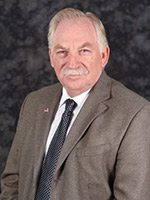California Institution for Men (CIM)
Main Phone: (909) 597-1821
Physical Address: 14901 Central Avenue, Chino, CA 91710 (Directions)
- Legal Mail: P.O. Box 3100, Chino, CA 91708
- Institution: P.O. Box 128, Chino, CA 91708
- Inmates (include Inmate’s Name and CDCR #):
- Facility A (WEST), California Institution for Men. Inmate’s Housing, P.O. Box 368, Chino, CA 91708
- Facility B (Reception Center Central), California Institution for Men, Inmate’s Housing, P.O. Box 441, Chino, CA 91708
- Facility C (EAST), California Institution for Men, Inmate’s Housing, P.O. Box 500, Chino, CA 91708
- Facility D, California Institution for Men, Inmate’s Housing
P.O. Box 600, Chino, CA 91708
Visiting an incarcerated person: learn how to visit an incarcerated person at our institutions.
Other Resources: explore family & friends resources, including how to contact or send packages to those incarcerated in our institutions.
The California Institution for Men (CIM) offers a variety of programs that strive to benefit the inmate population upon release. There is an assortment of academic programs available to inmates, including classes in Adult Basic Education I (ABE I), which is directed to inmates who are functionally illiterate ,Adult Basic Education II and III, for men who desire to up-grade their skills or meet prerequisites for vocational training.
Adult Basic Education classes provide instruction in writing, math, reading, life skills, language and pre-GED instruction.
For students who speak other languages, an English as a Second Language Program is offered to strengthen communication skills.
CIM offers a Substance Abuse Program (SAP) with a 150 inmate program enrollment for those inmates that may need addiction recovery assistance. Furthermore, there is a wide range of volunteer self-help groups that are also offered throughout the complex which meet regularly.
Under the direction of the Prison Industry Authority (PIA), CIM is home to the Leonard Greenstone Marine Technology Training Center (MTTC). This program was re-dedicated June 2006. MTTC provides an internationally recognized curriculum for its graduates. Coursework includes: diving physics, navigation, report writing, air systems, welding, seamanship, blueprint reading, diesel engines and marine construction. In addition to the coursework, MTTC graduates must demonstrate a high level of professionalism and confidence during and after their training. In addition to the MTTC, PIA operates a food and beverage packaging plant and a laundry facility which serves the California Institution for Women, California Rehabilitation Center, Patton and Lanterman State Hospitals.
Under the direction and supervision of the Community Resource Manager CIM offers the following Inmate Leisure Time Activity Groups: Alcoholic Anonymous & Narcotic Anonymous ? (educates and helps participant?s maintain sobriety), Veterans In Prison (VIP) (support group for veterans incarcerated., Victim Offender Education Group (VOEG) (restorative justice program helping participants understand the impact of the crimes and affects on the victim, family and community) PRIDE (Prisoners Reaching Independent Decision to Educate) group helps at risk youth in community through education.)
CIM also provide NON-ILTAG Programs such as Life Changing Mentoring Program (Program provides mentors to the children of incarcerate parents in an effort to break the cycle of crime.) ASK mentoring Program (program mentors inmates that receive little or no visits from family. Program is designed to help inmates focus on preparing to re-enter society.
Center For the Empowerment of Families (CEF) Program headed by Dr. Sharon Rabb teaches relationship skill, life skills and anger management to inmate participants.
Criminal Gang members Anonymous (CGA) a recovery program for all criminal regardless of their lifestyle and crime choice to help identify the causes and solutions of criminal behavior and foster a change in the lives of participants.
Fatherhood Program – Teach and foster effective parenting skills for incarcerated persons
College Education Program – Inmates enrolled in community college correspondence classes
Prison Education & Arts Program – College students tutoring and providing educational resources to inmates who participate in the volunteer education program. students and program participants are from CAL-POLY POMONA.
Celebrate Recovery -12-step recovery program for dysfunction including drugs, alcohol, sexual abuse, and anger
Toastmasters – A group that teaches the skills to be an effective public speaker while fostering leadership and responsibility
Prison Fellowship Pre-release Program – works with inmates who meet the 12-18 monthly release date. Program outline includes one on one life coaching skills, care team of volunteers, pre-release curriculum, and seminars
Religious Services are provided by State Chaplains who supervise a total of 500 volunteers from 93 Community Churches and Ministries.
DRP Programs
Integrated Substance Use Disorder Treatment (ISUDT)–Overview
On January 21, 2020, the California Department of Corrections and Rehabilitation (CDCR) and California Correctional Health Care Services (CCHCS) implemented ISUDT. ISUDT is a comprehensive and evidence-based cross-divisional program with pathways to treatment through DRP Cognitive Behavioral Interventions (CBI) programs referred to as:
CBI-Intensive Outpatient (Medical Classification T1, SOMS assignment code ISI) 2-hours/day, 5-days/week, 52-weeks completion
CBI-Outpatient (Medical Classification T2, SOMS assignment code ISO) 2-hours/day, 3-days/week, 14-weeks completion
CBI-Life Skills (Medical Classification T3, SOMS assignment code CB2) 2-hours/day, 3-days/week, 29-weeks completion
All participants will be assessed by medical and referred to one of the CBI classes.
The California Institution for Men is in Chino, located an hour from the beach or the mountains, and best known for the beautiful San Bernardino mountainside in the Chino Valley. In the Chino area you can enjoy Chino Hills State Park to hike and sightsee or any of the ten fishing locations in the area or visit the Planes of Fame Air Museum and the Yanks Air Museum or ride horses at the Prado Equestrian Center. Chino, so much to see and do, and a great place to call home.


Details
- Facility A has an inmate population of approximately 960 medium level-II Non-Designated Programming Facility inmates. The facility consists of eight dormitory housing units and each housing unit has a capacity of approximately 137 inmates.
- Facility B has an inmate population of approximately 977 medium/maximum custody level-II Non-Designated Programming Facility inmates. In addition to the Non-Designated Programming Facility mission, Facility B includes Palm Hall as a designated Administrative Segregation Unit. This Administrative Segregation unit receive inmates from CIM, California Rehabilitation Center, local CDCR/Cal Fire camps, inmates serving Security Housing Unit terms, in route to court or other CDCR Institutions.
- Facility C has an inmate population of approximately 760 level-II Non-Designated Programming Facility inmates, many of whom are serving life sentences. The facility consists of four housing units with a capacity of approximately 200 inmates. Facility C is located approximately 2 miles east of CIM’s main complex.
- Facility D has an inmate population of approximately 2,000 general population inmates and is designated as a Secure Level-I. The facility consists of 12 housing units with each housing unit having a capacity of approximately 200 inmates. The California Code of Regulations defines a Level I as consisting primarily of open dormitories with a population of low security level inmates. Inmates with 0 to 18 points (least likely to misbehave) are housed in Level I facilities. Inmates with minimum custody can be housed and work outside the secure perimeter where inmates with medium custody are housed and work inside the secure perimeter but can live in a dormitory environment.
- Academic and Inmate Leisure Time Activity Group (ILTAG) opportunities include high school/GED, pre-release, English as a second language, literacy and adult basic education, Alcoholics Anonymous, Narcotics Anonymous, Criminal Gang Anonymous, Celebrate Recovery, Veterans In Prison, Prison Fellowship Pre-release program, Center for the Empowerment of Families Fatherhood Group, Victim Offender Education Group, Toastmasters, Global Youth Connection, Alternative to Violence, California State University San Bernardino Visual Arts, and National Alliance of Mental Illness (NAMI).
- Work programs include the PIA laundry, Juice Processing and packaging plant, Marine Technology Training Center deep-sea diver training program, janitorial services, carpentry and building maintenance.
History
CIM opened in San Bernardino County in 1941 on 1,700 acres of land. The California Institution for Men (CIM) is a large complex consisting of four separate facilities under the administration of one warden.
Dedicated on June 21, 1941, the California Institution for Men was the first major minimum security institution built and operated in the United States. It was the State of California’s third correctional institution and was constructed to relieve the overcrowded conditions of San Quentin State Prison (1852) and Folsom State Prison (1881).
CIM was unique in the field of penology because it was known as the “prison without walls.” The only “security” fence around the facility units was a five-strand barbwire livestock fence, intended mainly to keep the dairy cows from wandering through the living areas.
CIM has since increased security to meet the challenges a vastly different inmate population requires. While no longer known as “the prison without walls” CIM’s Secure Level I Facility A houses the largest Level I inmate population within the California prison system. The CIM I Facility can house approximately 2,000 minimum custody level inmates at the facility.
In additional to the CIM I Facility, CIM’s operation includes one reception center, Facility B Reception Center (1951). In August 2010, CIM converted the former Reception Center West facility to a mainline facility known as Facility A, which houses custody level II non-designated programming inmate population. In December 2012 CIM converted Reception Center East facility to a mainline facility known as Facility C. This facility houses custody level-II non-designated programming inmate population.
Travis Pennington has been acting Warden at California Institution for Men (CIM) since December 2023.

Louie Escobell began his career as a Registered Nurse in 1979. He has spent over 25 years in healthcare and held every senior management position within the nursing profession. Louie continued his education and received a degree in Business Administration with minors in Leadership and Management from the University of Texas at San Antonio. He then spent 10 years with a private correctional company as a Health Administration and Regional Health Manager. Louie began his career with CDCR in 2014.
Local Inmate Family Councils (IFC’s) are a gathering of family and friends of the incarcerated who meet regularly with Wardens to support visiting since keeping strong family connections with loved ones is a powerful rehabilitative tool. These IFC’s promote visiting by clarifying rules and regulations as well as discussing health, education, vocational training, packages, books, and related issues. For more information on connecting with a local IFC, please visit the Statewide IFC website.